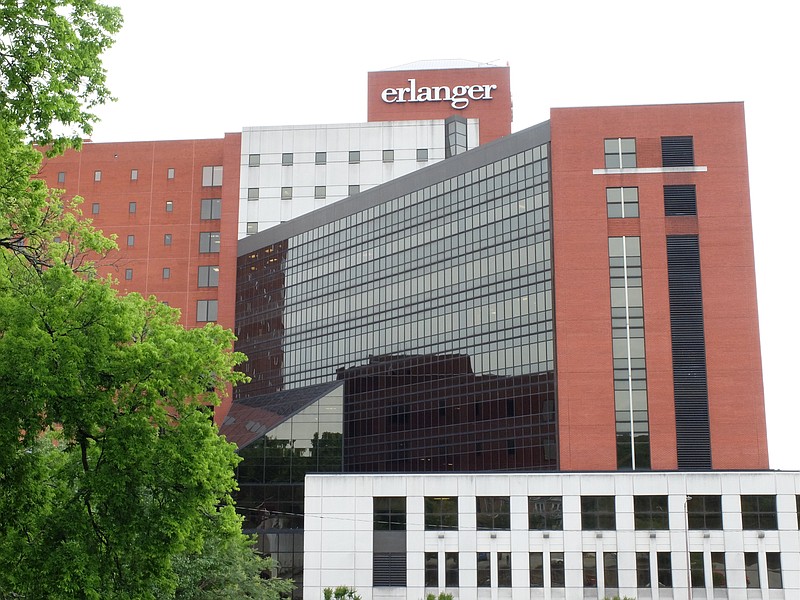Erlanger Health System posted its fifth consecutive quarter with a positive income from operations despite the ongoing COVID-19 crisis and an industrywide struggle to bring patient numbers back to pre-pandemic levels.
Erlanger's net income from operations for the quarter that ran from January through March was around $8.15 million, compared to a budgeted income of about $7.98 million and prior year income of $4.2 million, according to the hospital's latest financial report released Monday.
The health system outperformed the budget despite admissions falling nearly 28% below budget and 11.4% under the prior year.
Erlanger CEO Will Jackson said during the board's budget and finance committee meeting Monday that the hospital was able to keep on its streak of positive financial performance due to expense management and growth in outpatient services. Although admissions were lower than projected, March 2021 saw more admissions than any month in the past calendar year.
Erlanger's income included $5.2 million in federal relief funds given to hospitals to offset costs of the pandemic.
Jackson said it cost the health system $4.9 million to care for COVID-19 patients during the quarter, and the pandemic continues to strain it in other ways financially. For example, it's been a challenge to staff the hospital given the high demand for health care workers across the country, and Erlanger has spent extra money on overtime and recruitment incentives as a result.
"We're well served to acknowledge that the monies we received were there to cover a revenue shortfall from the pandemic and from the moratorium on surgeries, as well as the fact that there's increased expenses with COVID," Jackson said, adding that the remaining stimulus funds are set to be used in the current quarter, which ends June 30.
It's unlikely that any more funds will be allocated unless the pandemic takes an extreme turn for the worse, he said.
"When the federal funds go away, we'll have to look at how we can maintain what we're doing in a financially responsible way," Jackson said. "If you fastidiously manage your expenses under your revenues, you can always come up with margin, even if it's more modest than we'd like on occasion. So, that's our goal."
Trustee Jim Coleman, chairman of the board's budget and finance committee, said Erlanger's trend of better expense management began before the pandemic struck.
"We had a couple quarters of successful results going into it, and I think we've not been distracted by the pandemic, as difficult as it is," Coleman said. "I think the expense structure Erlanger has now is really as good as it's been in my memory, and I think that positions us well coming out of the pandemic."
In addition to receiving the latest financial report, committee members got their first glimpse of the statistical projections for the health system in fiscal year 2022, which begins July 1.
Steve Burkett, who has been leading Erlanger's strategy and business development, went over those projections and shared a breakdown of needed capital at the health system, which focuses heavily on technology upgrades.
Contact Elizabeth Fite at efite@timesfreepress.com or follow her on Twitter @ecfite.
